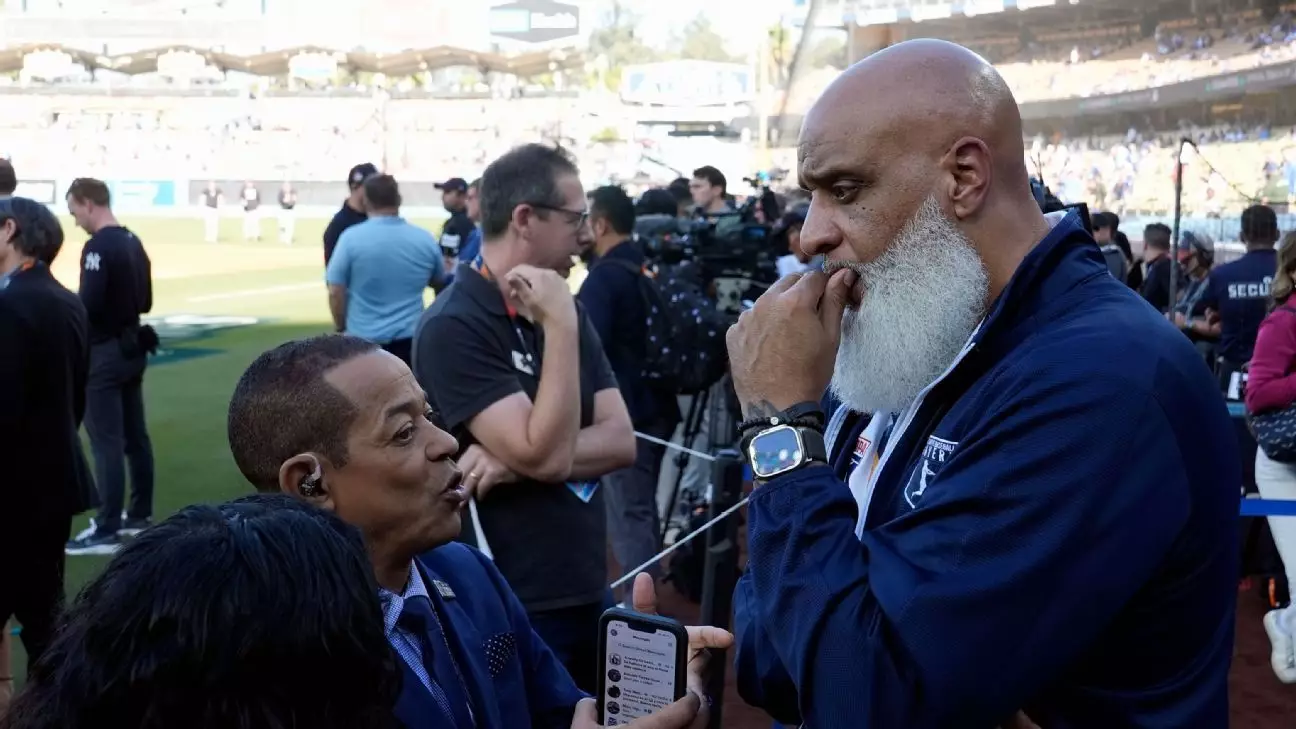In a recent statement reflecting the evolving landscape of Major League Baseball (MLB), Tony Clark, the executive director of the Major League Baseball Players Association (MLBPA), voiced significant worries regarding the management of pitchers. Speaking ahead of Game 1 of the World Series at Dodger Stadium, Clark stressed the pressing issue of pitcher utilization, a practice which he believes prioritizes short-term success over the long-term health of players. This perspective suggests a growing disconnect between the pressures exerted by teams and the foundational values of player preservation.
Clark’s comments highlight a shift in pitching strategies that have predominantly favored maximum effort from pitchers, both starters and relievers, regardless of the physical toll it may take. This philosophy, he argues, often leads to the premature withdrawal of fatigued pitchers, only to cycle in another who may soon face the same fate. As pitching injuries continue to rise, this trend raises crucial questions regarding the sustainability of such tactics in the sport.
A major point of contention revolves around how teams define value for their pitching staff. Historically, pitchers were revered for their ability to deliver quality starts—defined as pitching a minimum of six innings while allowing three or fewer earned runs. This standard, which has existed for over a century, prioritized the endurance and skill of starting pitchers. However, recent trends suggest that teams are increasingly prioritizing strikeout totals and inning limitations in an effort to remain competitive, shifting the focus away from the intrinsic value of deep innings.
According to Clark, this change does not stem from players’ desires but rather from the directives they receive from management. „Players are doing what it is they are being told they should do,“ he stated, underscoring a fundamental issue in the decision-making process within teams. If players were encouraged to prioritize longevity and quality starts, it stands to reason that they would adjust their strategies accordingly. Unfortunately, the current paradigm prioritizes immediate results, often at the cost of a pitcher’s long-term health.
The ramifications of this evolution are starkly evident in the alarming number of pitching injuries seen across MLB, particularly the prevalence of Tommy John surgeries, which have become commonplace among pitchers, some undergoing the procedure repeatedly. The deadly combination of intensified training regimens aimed at boosting fastball velocity, paired with the demand for peak performance, has created a perfect storm for injuries.
In light of these challenges, the league has proactively examined strategies to curb injury rates among pitchers. Innovations and incentive-driven approaches have been proposed to encourage proper usage and care for these athletes. However, as Clark notes, the reality remains that teams are driven by the imperative to win. As such, the call for a paradigm shift in training and usage strategies must come from those in the highest levels of decision-making. Until then, the cycle of injury and burnout is likely to persist.
Beyond pitching strategy, Clark’s insights extend to the playing environments as well. He highlighted the new stadium project in Sacramento, which promises a natural grass surface intended to mitigate injury risks during the sweltering summer months. This attention to the ballpark’s physical characteristics is essential for maintaining player safety. Clark emphasized the importance of major league standards in ensuring that players have safe and effective environments in which to perform and prepare.
As the MLB faces uncertainties related to venues like Tropicana Field following Hurricane Milton, Clark advocates for urgent consideration of player safety above all. Whether in a temporary spring training facility or a minor league venue, the priority must remain clear: providing a safe environment in which players can thrive. This approach signifies a critical shift toward accountability not only within teams but across the league as a whole.
The issues surrounding pitcher utilization in MLB underscore an urgent need for reflection and reform. As Clark articulated, until decision-makers are ready to reevaluate the current trajectory—one that sacrifices athlete longevity for immediate results—the strain on pitchers will only intensify. The commitment to quality over quantity could lead to a healthier landscape for the sport, ensuring that the legacy of baseball is one of sustainability and respect for its athletes. Without such changes, MLB may continue to grapple with the repercussions of an increasingly fragile pitching staff.


Napsat komentář